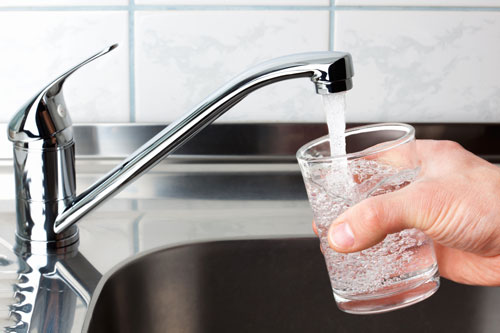As a homeowner, you want to ensure that the water coming from your taps is safe. Your household members not only drink tap water, but also use it to shower, prepare meals, and wash dishes and clothes.
Installing a whole-house filter is the most effective way to ensure that your home’s water supply is free from harmful contaminants.
Contaminants in Tap Water
Water treatment facilities remove contaminants to mitigate health risks such as waterborne bacterial diseases. However, your home’s water supply remains susceptible to contamination due to soil pollution, pipe deterioration, and industrial activities in the area.
Over the long run, exposure to these pollutants can also have adverse health effects.
Pollutants that may be in your tap water include:
- Chloramines
- Chlorine
- Cysts
- Herbicides
- Lead
- Mercury
- Methyl tertiary butyl ether (MTBE)
- Pesticides
- Pharmaceuticals and other harmful chemicals
- Volatile organic compounds (VOCs)
There is also a long list of heavy metals, bacteria, and viruses that may contaminate your tap water. Removing these contaminants is critical to ensuring your family’s health.

Whole-Home Filtration for Safe Drinking Water
A whole-house water filter is a point-of-entry filtration system that cleans the water in the main supply line before distribution to your kitchen, bathrooms, and outdoor taps. As a result, every tap in your home will provide you with clean and safe water.
With a whole-house filter, every appliance in your home has a reliable supply of clean water, including your washing machine, dishwasher, and water heaters.
Whole-Home Water Filtration Types
Whole-home water filters use different technologies to clean water. Some systems combine two or more filter types, and you can select a filter system to address the unique combination of contaminants in your water. These systems are suitable for every home, regardless of whether your water source is a well or the city supply.
Sediment Filters
Most whole-house systems feature sediment filters as prefiltration components. This type of filter is a cylindrical cartridge that consists of paper, cellulose, and polypropylene. These filters trap and remove pollutants with large particles, including sand, silt, and organic matter.
If your water looks dirty or has an unpleasant taste, a whole-home system with a sediment filter will make a noticeable difference.
Carbon Filters
Activated carbon filters have millions of microscopic pores and a large active filtration surface. This type of filter attracts and traps organic molecules and microscopic particles, including harmful chemicals such as chlorine and chloramines.
Removing chlorine and chloramine from your drinking water reduces the risk for health conditions such as dermatitis, autoimmune disease, influenza, and respiratory tract damage.
Redox
Oxidation-reduction (redox) is a water cleaning method that involves the exchange of electrons with contaminants. The exchange renders some contaminants harmless and binds others to the redox media, removing it from the water supply.
The contaminants a system can remove with redox include fungi, algae, chlorine, chromium, calcium carbonate, bacteria, iron, lead, and hydrogen sulfide.
Catalytic Conversion
Catalytic conversion is one of the latest technologies in water filtration and involves water softening without using salt. Conventional water softeners remove calcium and magnesium that make water hard.
Catalytic converters, on the other hand, change the properties of the minerals. The calcium and magnesium adopt a scale-resistant crystalline form that doesn’t attach to hard surfaces.
Ion Exchange
This filtration method involves a column full of polymer resin beads that bind positively charged ions. As water flows through the beads, the polymer binds to calcium and magnesium, exchanging these minerals with sodium. The water that flows out of the filter has a lower magnesium and calcium content and is softer, but it has a higher sodium content.
Ultraviolet Sterilization
UV sterilization is a water cleaning method that uses ultraviolet light to attack the microbial DNA of bacteria and viruses, which deactivates the microbes and prevents them from reproducing. This cleansing method is called germicidal irradiation. It removes contaminants such as parasitic cysts, E. coli, giardia, and cryptosporidium.
Whole-house filters typically feature UV sterilizers in combination with carbon and sediment filters. If you use well-water, you must select a whole-home filter with UV sterilization.
Point-Of-Use Filtration
A pinpoint filter only cleans the water in one location, such as your kitchen sink or shower. This type of system is usually a reverse osmosis (RO) filter that removes contaminants by forcing water through a semipermeable membrane that traps pollutants.
Contact Atlantic Blue Water Services
If you are concerned about the quality of your home’s water, Atlantic Blue Water Services can help. We will test your water to determine the pollutant content. Then, we will recommend the most suitable water treatment solution to ensure your family’s health. Our services also include the supply and installation of a water filter system.
Call us today at 410-840-2583 to schedule a water treatment service.
